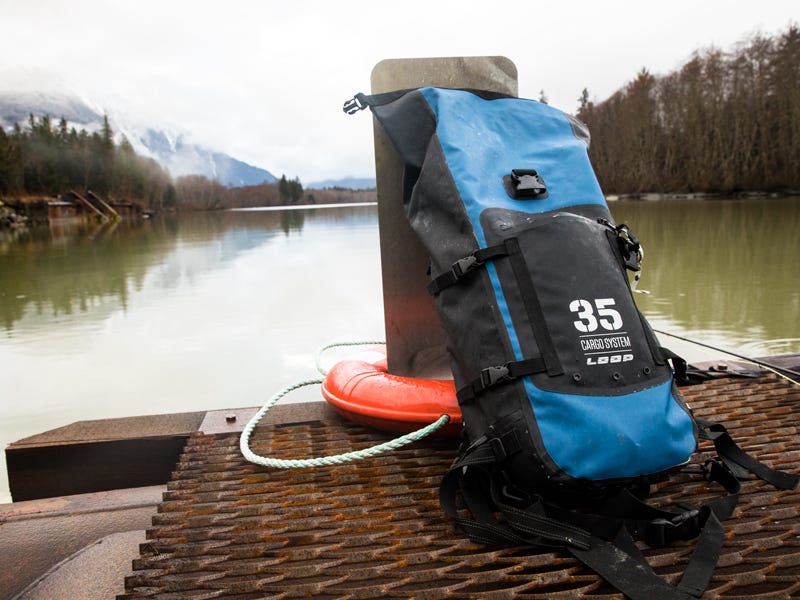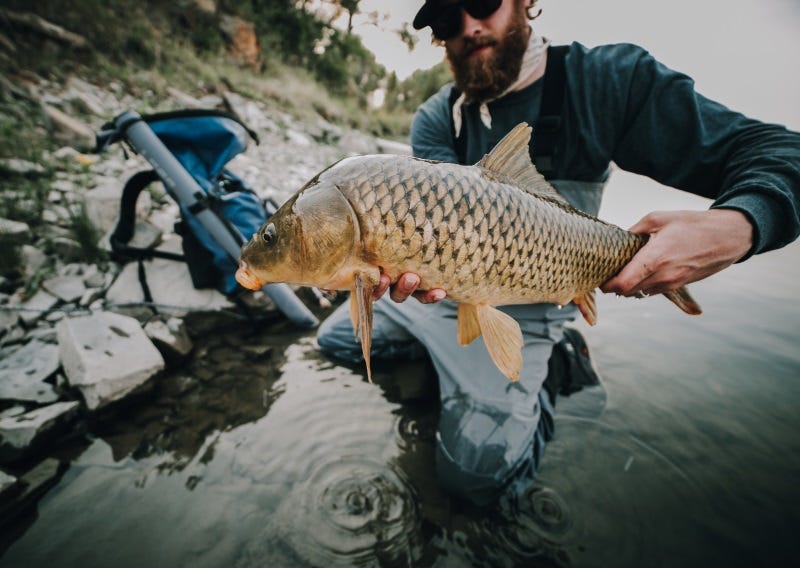The Case for a Fly Fishing Backpack


I love fly fishing gear and when I’m on the water, I like to have options. I also want to be prepared for as many potential fish-catching opportunities as possible. Have you ever hiked for miles to a fishing site only to discover you did not have the right tools for success? I have. More than once or twice. I didn’t like the ending to that story.
Beyond my love for fly-fishing gear, I also love to go fishing. I’ll take any opportunity to fish, even if it’s only a couple casts after work. When I have an entire day set aside to fish, I like to go all day. I don’t want the day cut short because I don’t have the proper gear or I’ve run out of food and drink. If you fish from a boat, gear is not a problem—just load that watercraft to the gunnels and head out. However, if you hike, walk and wade frequently, you need something to carry the load. Sling-packs and hip-packs work fine for short ventures, especially during the warm season. But, for a full-day adventure I recommend a backpack. You can set it up to fit your fishing style and adjust the contents through the seasons, which gives you a nice single carryall solution.

What’s In My Backpack?
Headlamp
You never know when you might be out past dark or need a little light on the way home. I’ve stumbled down dark trails more times than I care to admit. Light is good.
Extra gloves or mittens
I’m not a big fan of wearing gloves when fishing, but when I do, they always end up wet. It’s nice to have a dry pair in reserve. I can slip those on for the walk back to the truck.
Microfiber towel
Have you ever tried pulling on gloves over cold, wet hands? A towel helps with the problem. It’s also nice to have if a fish showers your glasses, especially in sub-freezing weather.
Jet Boil stove and fuel
Some hot food on a damp or icy day can be a game-changer. The Jet Boil also becomes a heat source if it’s stupid-cold and fingers need relief. My Jet Boil has salvaged many late-season guide trips in Alaska. Along with the stove, I carry a zip lock containing tea bags and cocoa. Sometimes I’ll include a French press with some fresh ground coffee. There might be a can or two of Campbell’s Chunky soup in there. Or, if I want to go lighter, a couple freeze-dried meals. I usually carry a water bottle unless the water source I’m fishing in is really good. A Yeti Tumbler and a double Snickers bar are usually in there as well.
Buff/Sun Shield
A sun shield is great for ear and face protection from both wind and UV. In Montana, the sun shield is often essential for keeping my trucker fishing hat from blowing off. When I’m hiking in cold weather, a warm hat generally makes me sweat too much. The sun shield is just enough to keep my ears from getting frost bite. If it’s really cold, I’ll eventually pull on a warm hat or hood and use the sun shield as a neck gaiter.
Fish Pond Waterdance tackle bag
I carry a tackle bag inside my backpack when hiking. It’s loaded and ready with my essentials and allows me to drop the pack and switch to the bag when I’m working down a run and don’t want the full basecamp on my back. Here’s what’s in it: B-shot, palsa indicators, Airlocks, wool (New Zealand Indicator), extra 4X tapered leaders, liquid and Dry Shake floatants, six tippet spools in 0X to 5X, FC streamer box, nymph box, dries and a softies box.
Trout spey setup
This is my go-to rig and honestly, I seldom need all the other stuff in the pack if I can find players that eat on the swing. I often switch heads or reels as conditions and/or spots change or just because I feel like casting something different. I’ve got one reel set up with a running line for Skagit and Scandi heads and another loaded with an integrated floating line. I carry a tip wallet with three types of tips, including a 10-foot intermediate, a 10-foot Type-3 and a 10-foot Type-6. Those tips cover most situations nicely. I also carry some custom cut T-8 tips in 5-foot, 7-foot, 8-foot and 10-foot lengths. There might be other stuff in there including a couple extra heads, but those are the key players.
Single-Hand Setups
On the side of the pack, I strap a rod tube with a 5-weight nymph rod and a 4-weight dry-fly rod. Without the rod socks, I can fit two rods inside a single, lined rod tube. I carry the reels, leadered up and ready in the pack. Most days, I don’t pull these rods out, but if a big midge hatch has some heads up, I’ll reach for the 4-weight. Or, if I just can’t get love on the swing, I might prospect with a nymph rig on the 5-weight.
Organization
The key for organizing all this stuff is to keep each grouping of items in its own stuff sack. I’ve got a sack for trout spey, a sack for single hand, a sack for a stove and food, and a sack for gloves, towel, face shield and headlamp. In addition to all this gear, I’ve still got room for an extra-warm layer or waterproof shell and possibly some adult beverages. Basically, the fly-fishing backpack has everything I need for an ideal day on the water.

So, what is the ideal fly-fishing backpack? Here’s my go-to:
Loop 35 Cargo Systems
With this system, I’m locked and loaded to take advantage of the time I have, however far I might travel from the car. I don’t always go out this fully loaded, but if I’m going to make a day of it and hike a considerable distance, this is my arsenal during the cold-weather season. This is the complete package that I aspire to have, and it covers all my needs for hours and miles. This is basically the mobile travel version of my boat bag plus some of the essential gear I’d have if I were in a boat.
